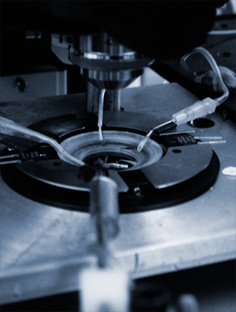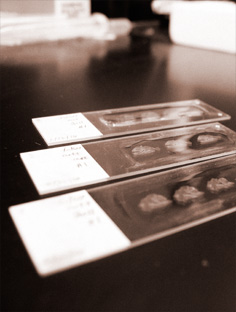Research

We are investigating the influence of nicotinic, opioid and stress hormone receptors on dopamine release and neuronal excitability in the nucleus accumbens. Two of our published studies are summarized here.
Behaviorally relevant stimuli prompt midbrain dopamine (DA) neurons to switch from tonic to burst firing patterns. Similar shifts to burst activity are thought to contribute to the addictive effects of opiates and nicotine. The nucleus accumbens DA overflow produced by these drugs is a key element in their pathological effects. Using electrochemical techniques in brain slices, we have explored the effects of nicotine and opioids on single-spike and burst stimuli-evoked DA overflow in the dorsal and ventral striatum. Both these drugs can inhibit DA overflow elicited with single-spike stimuli while leaving that produced by burst stimuli unaffected. While nicotine achieves this effect by desensitizing nAChRs on DA terminals, the opioid effects are mediated by inhibition of cholinergic interneurons. These observations reveal remarkable mechanistic overlap between the effects of nicotine and opiates within the dopamine reward pathway.
Stress hormones released in the CNS following unavoidable, aversive stimuli alter the physiology of neurons in multiple brain regions including hippocampus, amygdala, prefrontal cortex, and ventral tegmental area. The nucleus accumbens (NAc), a motor-limbic interface linked to motivation and reward, receives inputs from each of these stress-affected brain regions. To assess potential stress-induced plasticity in the NAc, we exposed adult mice to daily cold water forced swim for 2 consecutive days and conducted electrophysiological experiments assessing glutamate receptor function in brain slices taken 18-24 h following the second swim. We found that the ratio AMPA receptor (AMPAR) to N-methyl-d-aspartate receptor (NMDAR) responses at excitatory inputs to NAc medium spiny neurons (MSNs) were increased in the shell but not core subregion. The AMPAR/NMDAR ratio is a measure of the status of synaptic plasticity that correlates directly with LTP and indirectly with LTD. The stress-induced effects are blocked by preadministration of glucocorticoid receptor antagonist RU486, suggesting that the observed changes are dependent on corticosteroid signaling. The role of corticosterone in the observed plasticity was confirmed, as exogenous corticosterone administration also enhanced AMPAR/NMDAR ratios in the NAc shell, which is consistent with LTP induction at this synapse. We hypothesize that altered information processing via plasticity of excitatory inputs might contribute to reward-related behaviors, such as stress-induced reinstatement of drug seeking in animals and relapse in humans.
- J.P. Britt, D.S. McGehee (2008) Presynaptic opioid and nicotinic receptor modulation of dopamine overflow in the nucleus accumbens. J. Neuroscience 28(7):1672-81.
- M.R. Campioni, M. Xu, D.S. McGehee. (2009) Stress-induced changes in nucleus accumbens glutamate synaptic plasticity. J Neurophysiol. 101(6):3192-8.







